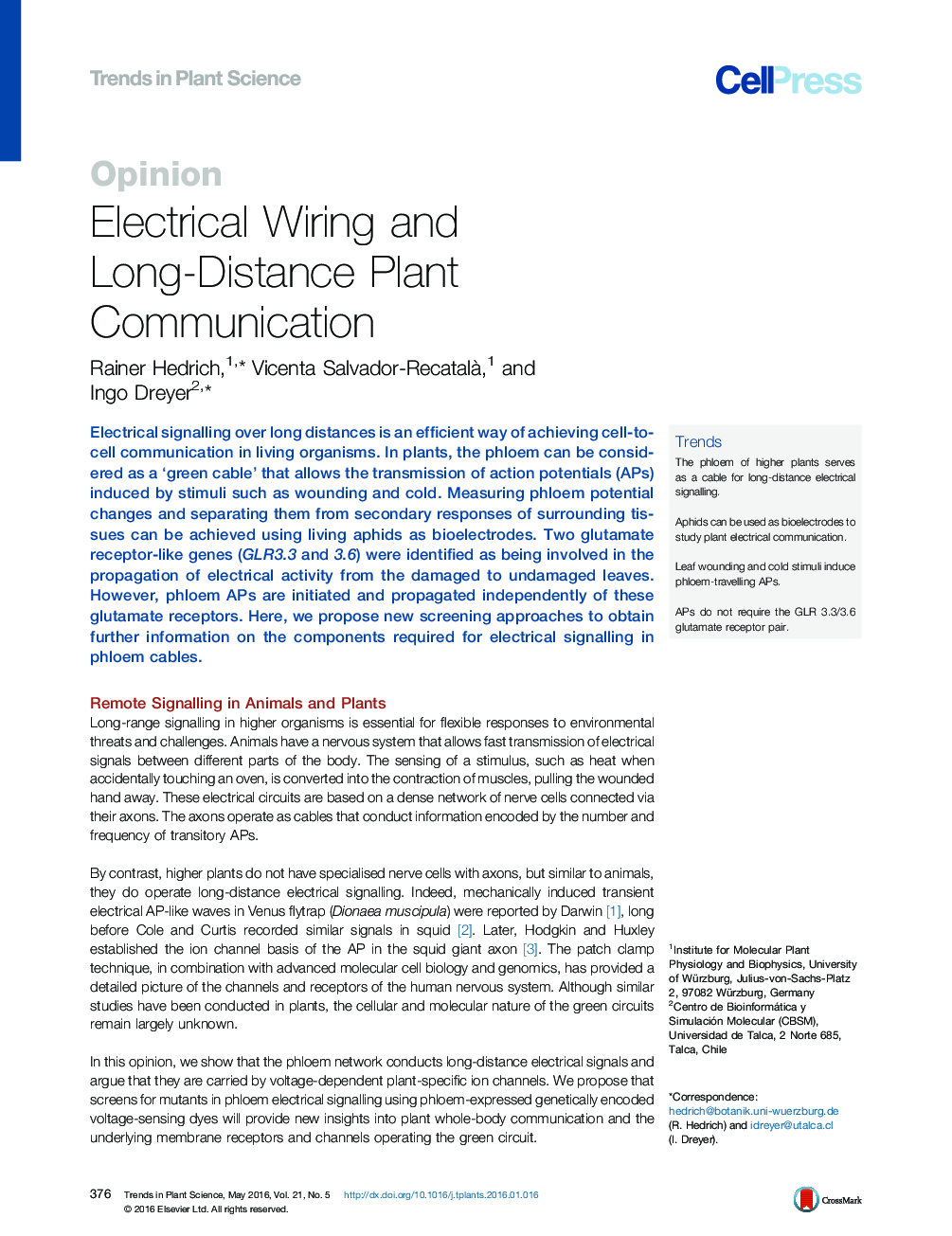| Article ID | Journal | Published Year | Pages | File Type |
|---|---|---|---|---|
| 2825718 | Trends in Plant Science | 2016 | 12 Pages |
Electrical signalling over long distances is an efficient way of achieving cell-to-cell communication in living organisms. In plants, the phloem can be considered as a ‘green cable’ that allows the transmission of action potentials (APs) induced by stimuli such as wounding and cold. Measuring phloem potential changes and separating them from secondary responses of surrounding tissues can be achieved using living aphids as bioelectrodes. Two glutamate receptor-like genes (GLR3.3 and 3.6) were identified as being involved in the propagation of electrical activity from the damaged to undamaged leaves. However, phloem APs are initiated and propagated independently of these glutamate receptors. Here, we propose new screening approaches to obtain further information on the components required for electrical signalling in phloem cables.
TrendsThe phloem of higher plants serves as a cable for long-distance electrical signalling.Aphids can be used as bioelectrodes to study plant electrical communication.Leaf wounding and cold stimuli induce phloem-travelling APs.APs do not require the GLR 3.3/3.6 glutamate receptor pair.
